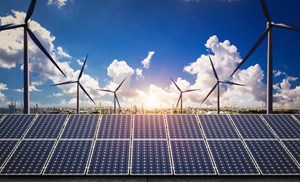Future Market Insights: Floating power plant demand to be valued at $26 billion by 2023
The global floating power plant market is projected to attain a valuation of $11.04 billion in 2023 and is expected to reach $26 billion by 2033, trailing a CAGR of 9% during the forecast period.
The rising demand for power and a growing number of energy efficiency mandates are expected to fuel the sales of floating power plant during the forecast period.
The demand for floating power plants is expected to rise due to the growing need for low-carbon electricity in various sectors and insufficient power infrastructure in many countries. Floating power plants (FPPs) play a crucial role as decentralized power sources, offering both high efficiency and stability.
Floating power plants are capable of handling sudden changes in power demand and can start up quickly. These plants are portable and well-suited for seasonal and intermittent operations, contributing to grid stability for different types of renewable energy sources. These factors are expected to have a favorable impact on the industry's development in the foreseeable future.
Floating power plants are a type of power generator that is present on an existing cargo ship. These can be connected to the national grid, can go overseas wherever required, and are usually self-driven. FPPs are a potential alternative to land-based power plants, as they can fulfill the ever-increasing demand for power, especially in rural and remote areas.
Floating power plants can also provide electricity to areas with limited infrastructure, as well as deliver secure power supply in case of floods and earthquakes. These power plants often reduce dust pollution, as they are built on the water.
Prominent drivers spearheading floating power plant market growth. The lack of power infrastructure, demand for low-carbon energy, and increasing government investments in the energy industry are set to drive the floating power plant market growth in the evaluation period. Low operating costs, high reliability, and the high-power density of IC engine-based floating power plants also play significant factors and are estimated to propel the market.
Asia-Pacific emerges as an opportunistic floating power plant market. Asia-Pacific is estimated to generate the leading floating power plant market share in the evaluation period. The region is expected to accumulate over 40% of its market share in 2023. The region’s market is projected to expand with a CAGR of 9.2% during the forecast period.
This growth is attributable to the increasing adoption of renewable energy sources and the rapid development of infrastructure in various end-use industries in emerging economies, such as India and China.
The rising number of potential projects to develop new renewable energy-based floating power plants is expected to attract various key players to Asia-Pacific. The ongoing development of innovative technologies, such as digitization and automation in the power plant sector, is another vital factor that is likely to bode well for the regional market.
How Europe is contributing to the rise of floating power plant demand.
Many European countries are focusing on the development of novel power generation methods, but have limited access to land. This is expected to increase the demand for floating power plants in this region. A CAGR of 8.8% during the forecast period also contributes to the increased interest. The European Union is also expected to invest huge sums in various development projects in the assessment period.
Countries, such as Italy, the United Kingdom, and Germany, are aiming to install new power plants to lower their reliance on other countries for fossil fuels. They are also striving to reduce the effect of emissions on the environment by investing in lower-carbon energy generation projects.
Start-ups in the floating power plant market. Start-ups play a vital role in recognizing growth opportunities and driving industry expansion. Also, their efficiency in converting inputs into outputs and adapting to volatile market conditions is valuable. In the floating power plant market, several start-ups are engaged in manufacturing and providing related services.
For example, Minesto specializes in providing a device for capturing tidal energy. Their solution involves an underwater kite structure that incorporates a horizontal axis turbine, harnessing energy from ocean and tidal currents.
In addition, Swimsol specializes in marine-grade floating solar power plants for the sea, offering services such as design, installation, monitoring, maintenance, and financing.
Competitive landscape. The market for floating power plants is characterized by intense competition, as notable industry players are making significant investments to enhance their manufacturing capabilities.
The key industry players working in the market are Wartsila, MAN Diesel & Turbo SE, Upsolar, Burmeister & Wain Scandinavian Contractor A/S, Mitsubishi Corporation, Siemens AG, Ideol, Floating Power Plant A/S, Kyocera Corporation, SeaTwirl AB, Principle Power, Inc., Caterpillar, Inc., Vikram Solar Pvt., Ltd., Ciel & Terre International, Yingli Solar, and General Electric Company.
Recent developments in the floating power plant market. In April 2023, Wartsila, Hoegh LNG, IFE, University of South-East Norway, Sustainable Energy, and BASF SE secured around EUR 5.9 million ($6.34 million) in funding from the Norwegian Government.
In April 2023, Wärtsilä renewed its Operation & Maintenance agreement with Geradora de Energia do Amazonas (Gera Amazonas), an independent energy producer based in Brazil.
In August 2021, Falck Renewables SpA, from Italy, and floating wind specialist BlueFloat Energy, from Spain, unveiled their joint plan to establish and deploy floating offshore wind farms along the Italian coast.
In October 2020, Wärtsilä and JB Corporation entered into a nine-year optimized maintenance agreement to ensure the operational reliability of a power plant located in South Korea.



